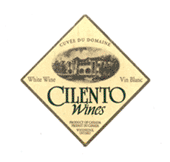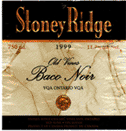![]()
Recent Articles
Archive of National Post Articles
![]()

LCBO
listing system not working well?
400 wines delisted
Michael
Vaughan
Wine & Spirits Columnist
National Post • Saturday, March 24,
2001
You
may be wondering about this month’s massive sell-off that is currently
underway at the LCBO. There’s no hoopla; there are no ads. It appears
that this annual General List purge of its 1700 products is, in my
opinion, the result of a system, which isn’t working properly. And
it’s becoming an ever -more serious problem as the number of delistings
has exploded from 250 last year to now over 400 products.
“All
too often we’re inundated with new worthless listings, which simply
aren’t worth swallowing,” says one wine importer. “The real gems, at
least qualitatively, are lost in a sea of mediocrity.”
And
that’s a serious problem because the sheer volume of new wines
constantly appearing makes it tough for the consumer to figure out what to
buy - last year some 400 new products were added. This is further
compounded by often erroneous, advertorial-driven recommendations that
litter some LCBO and/or consumer publications.
Consumers
buying on the strength of such ads or reviews often find that the wine
disappoints and don’t go for the bait again. What this means is that
many, if not most, new products are not tasted. After all, how many
consumers can afford to go out and buy a bottle of every new wine,
especially when many are disappointing? And so they stick with the wines
they know - safe rather than sorry.
How,
you might ask, does this stuff get into the stores? It all boils down to
the way the LCBO works and in particular, the way the LCBO buys its wines.
Listings are more related to price, packaging and/or possible advertising
(especially in LCBO publications). Out of 100 possible points, the very
best wine (a Parker 100-out-of-100) would get a maximum of 20
“organoleptic” points on the LCBO’s application.
Don’t
think an importer can simply walk into the LCBO, plonk down a great wine
at a terrific price and expect a listing. It doesn’t work that way. In
fact, the initial screening process doesn’t even allow for a
pre-tasting! “It’s a don’t call us, we’ll call you situation”
says a Toronto agent. “They tell us what wines they are interested in,
and that’s that! If what we want to submit isn’t on their list, it’s
tough luck.”
It’s
scary to think that at the LCBO, quality doesn’t seem to count! In fact,
the LCBO listing application form allocates as many points (20) for the
packaging as taste. Twice as many points (40) go to the marketing plan
which contains an extensive list of costly LCBO merchandising programs in
which the supplier is expected to participate. If you thought that all
those customer-friendly in-store tastings, aisle-end displays, special
events, value added, product extenders, Air Miles, limited time discounts,
etc. are paid for by the LCBO you’re dead wrong. It’s the suppliers
who pay for all these items, along with hefty Food & Drink Magazine
advertising, which miraculously still looses money.
“I
feel I’m being blackmailed,” says another importer. “One year they
demanded such a low price for the General List Beaujolais Nouveau that
most reputable producers refused to submit samples.” This and the
multitude of related LCBO marketing gaffs - from not positioning the wines
correctly in the stores to the all-too-frequent no-wine-on the-shelf
(“stock-outs’) syndrome - hurts the sale of any product. The fact that
many of these wines can’t be found in most LCBO stores doesn’t help.
Of
course, the LCBO doesn’t have to worry about buying turkey wines because
it’s the producer who is forced to pay the LCBO a 25% discount on any
delisted product. Tell me anywhere in the world where you can find a
quasi-monopolistic retailer who forces the producer to pay for its
purchasing errors?
What
happens is that a wine has to sell a certain volume, which is, related to
its price – the higher the price the lower the LCBO quota. And boy, you
better get your act together quickly because if your products don’t
start meeting this quota within 12 months, “you’re outta here!”
After that, you’re inspected every two months. Importers justifiably
complain that this isn’t enough of a window to launch some products.
Certainly, some of the idiosyncratic niche items deserve special
consideration. Should an Argentine Torrontes be on equal footing with a
California Chardonnay?
In
all fairness, the LCBO does try to address some of these concerns. An
importer can appeal the delisting (once only). Unfortunately, in this most
recent slaughter, virtually no appeals were accepted. If you were one case under, you were delisted! The reason?
Apparently it’s the LCBO’s impending yearend – time to purge the
shelves and make room in the warehouse.
Of
course, it would be silly to blame a wine’s lack of success solely on
the LCBO. In particular, there’s the inertia of some local agents, which
has a lot to do with it. “Ironically, some of the biggest companies are
the worst offenders” says one LCBO official.
Moreover,
some of the delisted products are downright awful and didn’t deserve to
get on to the General List to begin with. And that’s the crux of the
problem because if the quality isn’t there, consumers will have no
confidence in trying new products. Ironically, this annual cleansing
delisting process does fill LCBO coffers with a new flow of fresh money. This is to support the new listings and is aimed at trying to
convince customers that the new batch of products is worth trying. Four
hundred new products, for instance, might pump a million dollars worth of
new marketing revenues into the LCBO coffers.

 The
fact that many poor wines die a perfectly natural death is fine.
Unfortunately, some very good wines have been delisted along with the bath
water. This includes the banishing of several Ontario wines, which deserve
the precarious shelf space they occupy - i.e. the recent 2001 Cuvée
Winning “Best General List White” Cilento
1999 Chardonnay No Oak – an award ironically sponsored by the
LCBO itself. Also of concern is the delicious Stoney
Ridge 1999 Baco Noir Old Vines ($11.95 now reduced to $7.35),
winner of Toronto Wine & Cheese Show gold medals for two years in a
row. According to the producer, “sales were growing every year, giving
it a good chance of success. But, unfortunately, time wasn’t on its side
– it’s gone!”
The
fact that many poor wines die a perfectly natural death is fine.
Unfortunately, some very good wines have been delisted along with the bath
water. This includes the banishing of several Ontario wines, which deserve
the precarious shelf space they occupy - i.e. the recent 2001 Cuvée
Winning “Best General List White” Cilento
1999 Chardonnay No Oak – an award ironically sponsored by the
LCBO itself. Also of concern is the delicious Stoney
Ridge 1999 Baco Noir Old Vines ($11.95 now reduced to $7.35),
winner of Toronto Wine & Cheese Show gold medals for two years in a
row. According to the producer, “sales were growing every year, giving
it a good chance of success. But, unfortunately, time wasn’t on its side
– it’s gone!”
Obviously
this growing General List debacle is a reflection of the LCBO’s failure
to focus on quality. If you want to gain the respect of the customer then,
like any retailer of repute, sell products you’re proud of. As for the
400+ delisted products, my website is the only place where you can find
them! And there are some terrific buys like the deliciously sweet Italian
bubbly Fontanafredda
Asti (reduced from $12.55 to $8.65). Plus for Argentina fans,
two-thirds of all their wines (12 of 18) are now gone! Enough to make one
hum “Don’t cry for me…”
It’s
sad to think that Vintages is now the LCBO’s last refuge for quality.
Certainly its wines are head and shoulders better than what you can find
on the General List. Unfortunately, even here the odds are stacked against
the importer when trying to get a wine tasted. In this month’s LCBO call
for Spanish reds and whites, out of over 500 requests to submit a wine for
tasting, apparently only some five dozen were accepted! Of this, 18 will
be chosen. Not only are a fraction of the wines being tasted, but also
they aren’t even evaluated blind!
 Moving
on: I had great expectations for today’s
Vintages “When in Rhône explore
the stellar 1998s” release. Unfortunately, heavy clouds are
obscuring the sky. Of 23 listings, my hopes were dashed in the spittoon of
reality by the overall average quality (for full detailed reviews see the
current March issue of Vintage Assessments posted on my website).
Thankfully there is one tremendous red highlight - the wonderful, smoky,
rich, gamey Delas
Frères 1998 Crozes-Hermitage Les Launes stunning value at a
mere $19.95. Now there were supposed to be 600 cases available but
apparently some stores jumped the gun by selling this treasure before the
release! Don’t ask I’m surprised.
Moving
on: I had great expectations for today’s
Vintages “When in Rhône explore
the stellar 1998s” release. Unfortunately, heavy clouds are
obscuring the sky. Of 23 listings, my hopes were dashed in the spittoon of
reality by the overall average quality (for full detailed reviews see the
current March issue of Vintage Assessments posted on my website).
Thankfully there is one tremendous red highlight - the wonderful, smoky,
rich, gamey Delas
Frères 1998 Crozes-Hermitage Les Launes stunning value at a
mere $19.95. Now there were supposed to be 600 cases available but
apparently some stores jumped the gun by selling this treasure before the
release! Don’t ask I’m surprised.
Copyright
Food & Beverage Testing Institute of Canada 2004
Prior written permission is required for any form of reproduction
(electronic or other wise) and or quotation.
Contact Michael Vaughan at
mbv@total.net